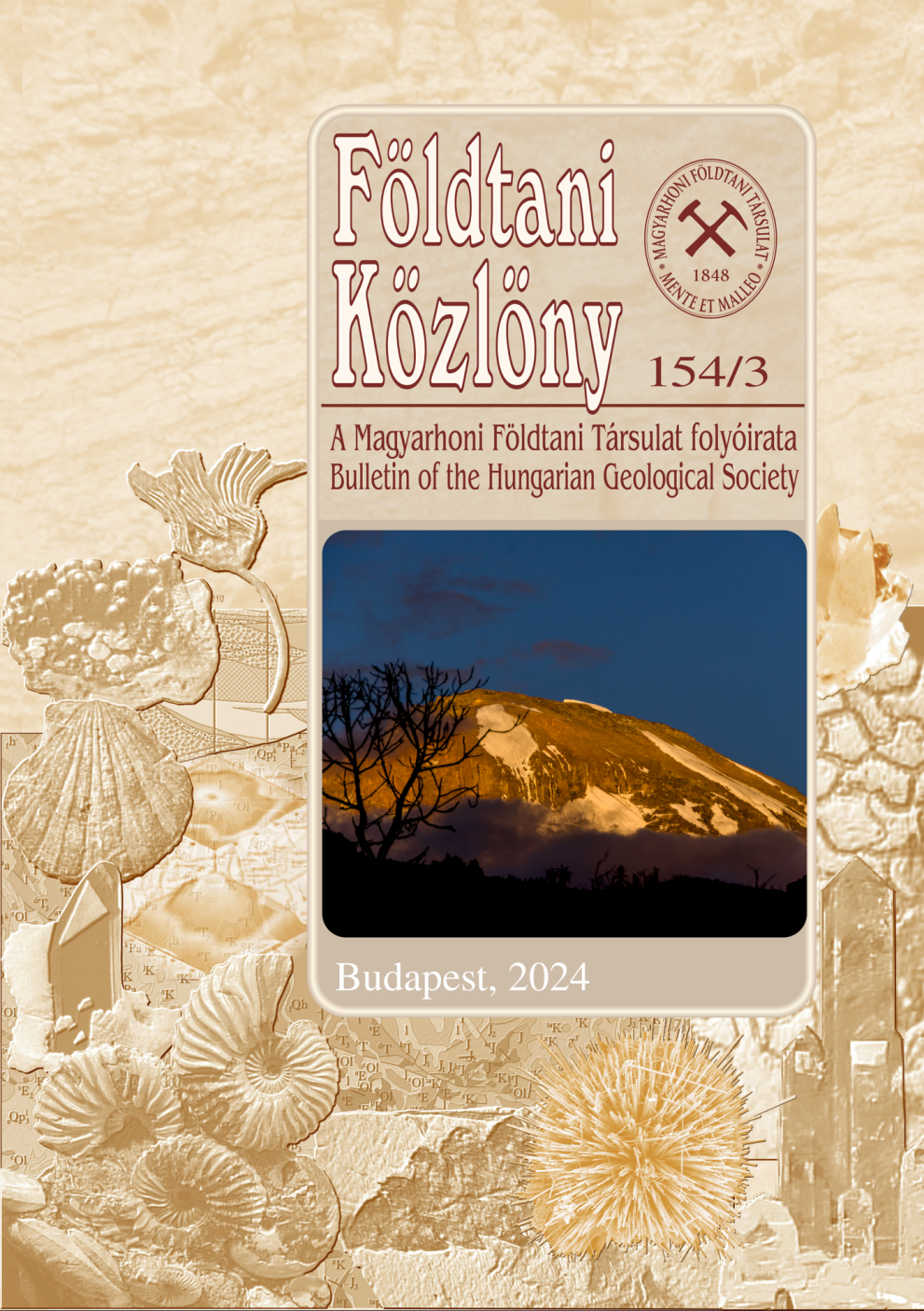A vincepáli (Répáshuta, Bükk hegység) karsztvasérc mangán- és vasásványai
Abstract
The SE part of the Bükk Mts (NE Hungary) consists largely of massive limestone. The morphology is characterized by incised valleys but there are numerous palaeodolines in high (hilltop or saddle) position with partly eroded infill,
probably of Early Miocene age. The typical filling material is chert debris in clay matrix. One of these dolines, situated on the Vincepál Hill near Répáshuta, hosted an iron ore mine in the 19th century. The remnants of the ore can be still accessed in an ancient dump.
The present work summarizes the mineralogical study of the mineralization by optical microscopy, X-ray powder diffraction, scanning electron microscopy and energy dispersive X-ray spectrometry. The rock is a chert breccia cemented by goethite and Mn-oxides instead of the clay matrix. The primary Mn-oxide is fine-grained or fine fibrous cryptomelane, forming dark crusts with silky lustre on the chert debris. Secondary mineralization formed coarse-grained
pyrolusite, coarse fibrous ramsdellite and akhtenskite as cavity filling material. Goethite was transformed in thin crusts to haematite.
The paragenesis indicates a supergene mineralization in oxidative environment, analogous to the Hunsrück-type ore in Germany. The debris of the same material type near Bükkszentkereszt contains lithiophorite and todorokite like recent
weathering crusts on Jurassic chloritic metapelite, one of the source rocks of the doline filling sediments. This indicates the possible existence of further, at least partly eroded ore deposits.











